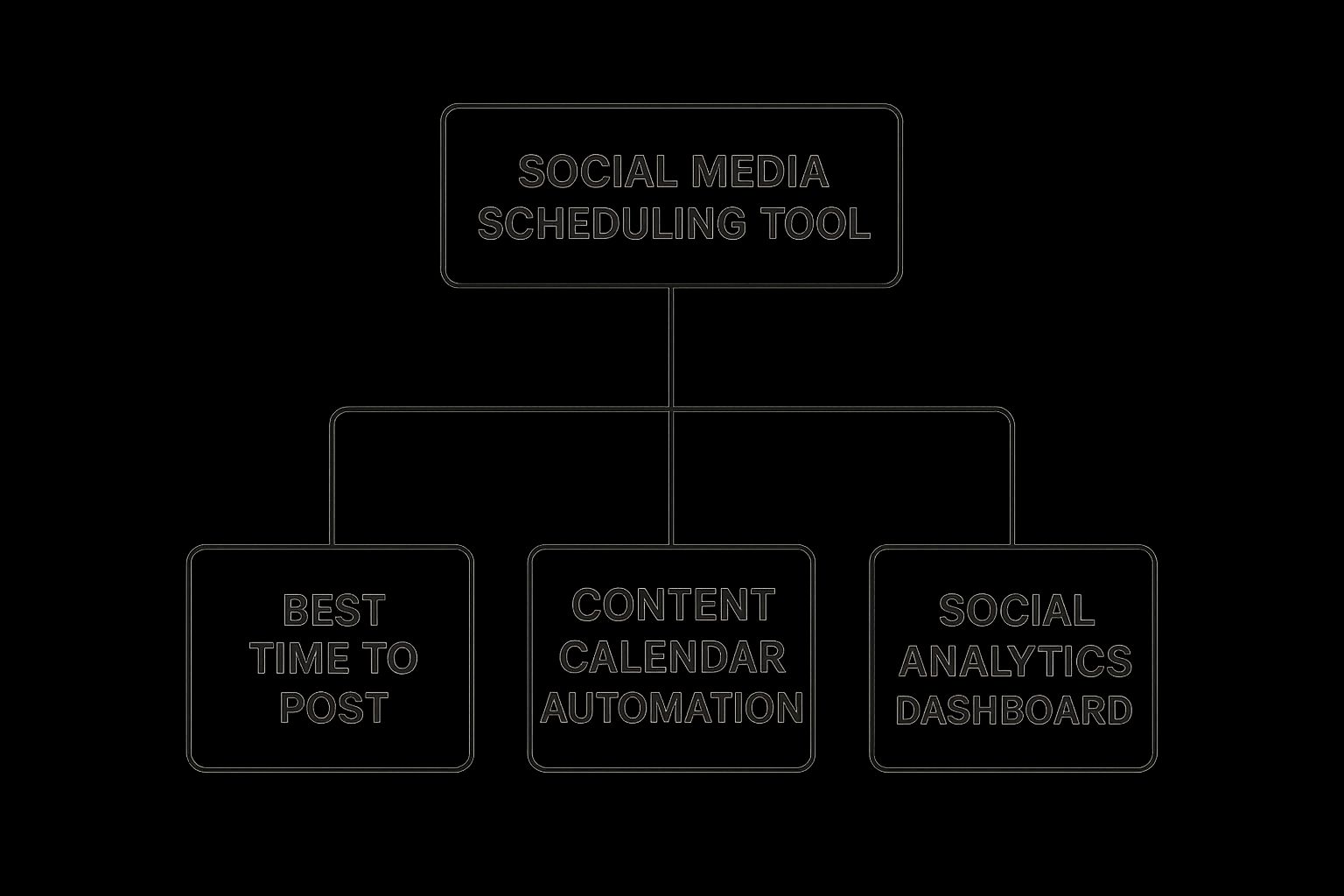
Are you staring at a blank page, wondering how many keywords to cram into your article for it to rank? This is a common pain point for marketers and creators alike. The old advice about "keyword density" has led to a lot of confusion and, frankly, a lot of robotic-sounding content. The good news is that the answer is much simpler and more intuitive than you think. This guide will walk you through the modern approach, showing you how to focus on a single primary keyword and support it with related terms to create content that both users and search engines love.
The Modern Answer to the Keyword Question

Let's clear the air: there is no magic number of keywords per page. The outdated concept of hitting a specific "keyword density" is no longer relevant. Modern SEO, powered by sophisticated search engine algorithms, prioritizes topical authority and user intent over simple keyword repetition.
The core strategy is to build each page around one primary keyword and enrich it with a handful of closely related secondary keywords. This approach helps you create a comprehensive and valuable resource that thoroughly answers a user's query, which is what Google ultimately wants to reward. This philosophy is a key part of any effective comprehensive content marketing strategy guide in today's digital landscape.
Why Topical Authority Beat Keyword Density
Not long ago, SEO felt like a formula. The dominant metric was keyword density, where marketers aimed for a 1-2% ratio of their target keyword. This often resulted in clunky, unnatural content stuffed with repetitive phrases. Thankfully, search engines have evolved. Algorithms like Google's RankBrain and BERT are designed to understand the context and intent behind a search query, not just count how many times a word appears.
This shift marked the move from repetition to relevance. Search engines now reward topical authority—demonstrating a deep and comprehensive understanding of a subject. This is a critical concept, especially when learning how to use AI for marketing to generate content that sounds human and provides genuine value. For a deeper analysis of this evolution, check out this excellent article on the evolution from keyword density to semantic search on searchatlas.com. Chasing an arbitrary number won't just fail to improve your rank; it can signal low-quality content to both users and Google.
Real-World Example:
An agency creating a blog post for a client's social media tool used to focus on repeating "social media scheduler" 15 times. Today, they would instead create a comprehensive guide covering related topics like "best times to post," "content calendar automation," and "social media analytics," demonstrating true expertise on the entire subject.
One Primary Keyword, Several Supporting Terms

Instead of asking "how many SEO keywords per page," a better question is "which keywords create the most comprehensive resource?" The key is to structure your content around a single star performer and a strong supporting cast.
Primary Keyword: This is the core topic and your main ranking target. It should define the page's entire purpose. It belongs in your H1 title, URL, meta description, and the first 100 words. For example, a freelancer’s service page might target “AI content creation services.”
Secondary Keywords: These are closely related terms, long-tail variations, and user questions that add depth and context. They naturally fit into subheadings (H2s and H3s) and the body of your content. For the same freelancer, secondary keywords could be “generate blog posts with AI,” “AI social media captions,” or “how to use AI for marketing content.”
Here’s a simple comparison of their roles:
| Keyword Type | Role on the Page | Placement Example |
|---|---|---|
| Primary Keyword | The core topic; the main ranking target. | Page Title (H1), URL, First 100 words |
| Secondary Keyword | Adds context and depth; answers related questions. | Subheadings (H2, H3), Body content, FAQs |
This hierarchical approach transforms a single page into a magnet for a cluster of related searches. Finding the right mix is simple with the help of free keyword research tools that can reveal what your audience is actually searching for.
Building Topical Coverage That Ranks

Modern SEO is won with topical coverage. The pages that consistently outperform their competitors are the ones that cover a subject so completely they become the go-to resource. This shifts the goal from asking "how many seo keywords per page" to "how well have I answered the user's query?" When you create a definitive resource, you naturally begin ranking for hundreds of long-tail variations you didn't even explicitly target.
To do this, you need to anticipate your reader's follow-up questions.
Use Case for a Content Creator:
A YouTuber creating a blog post to support their video on "iPhone photography tips" (the primary keyword) should also cover:
- Essential Settings: "iPhone camera grid," "portrait mode lighting," "ProRAW format"
- Common Challenges: "low light photography," "reducing motion blur"
- Editing Techniques: "best photo editing apps for iPhone," "color grading basics"
This approach is backed by data. Studies on search engine performance, like these ranking factor findings on surferseo.com, show that pages with broad semantic relevance perform better. Brainstorming every subtopic can be time-consuming, but the best AI tools for content creation like MediaWorkbench.ai can instantly generate related topics and questions, helping you build an expert-level content brief in minutes.
👉 Try MediaWorkbench.ai for free – schedule your posts and generate AI content in one place!
How to Place Keywords Naturally

Knowing which keywords to use is only half the battle. The art lies in integrating them into your content so smoothly that the text flows naturally. The golden rule is: write for people first, search engines second. If your content sounds forced or robotic, you’ve missed the point.
Here’s a practical checklist for high-impact keyword placement:
- Page Title & H1 Heading: Your primary keyword is non-negotiable here.
- Introduction: Weave your primary keyword into the first 100 words to set the topic immediately.
- Subheadings (H2s & H3s): These are ideal for secondary keywords, as they structure your content and signal relevance.
- Image Alt Text: Use a primary or secondary keyword to describe your images for accessibility and SEO.
- Internal Links: Use keyword-rich anchor text when linking to other relevant pages on your site. For more on this, check out our SEO copywriting tips.
While there's no strict rule, a natural flow often results in mentioning a key term or variation once every 100-150 words. The goal isn’t to hit a quota but to create a rich, contextual piece of content.
Conclusion: Focus on Value, Not Volume
The debate over "how many seo keywords per page" is a relic of an older, less sophisticated era of the internet. Today, success hinges on building topical authority and providing genuine value to your audience. Instead of counting keywords, focus your energy on creating the single most comprehensive and helpful resource on your chosen topic.
By centering each page on one primary keyword and supporting it with a rich variety of secondary terms, you demonstrate expertise and meet user intent head-on. When you shift your focus from keyword quotas to creating exceptional content, the rankings will follow. For more foundational knowledge, our guide on copywriting tips for beginners is a great starting point.
Ready to streamline your content workflow? Explore MediaWorkbench.ai to discover how our AI-powered tools can help you research, write, and schedule top-tier content in a fraction of the time.
Common Questions, Answered
Can I Target More Than One Primary Keyword Per Page?
It's best to stick to one primary keyword per page. Trying to optimize for two distinct core topics (e.g., "email marketing software" and "social media scheduling tools") on the same page dilutes your focus and confuses search engines. This makes it difficult to rank well for either term. Give each important keyword its own dedicated page to build clear authority.
What Is Keyword Cannibalization and How Do I Avoid It?
Keyword cannibalization occurs when multiple pages on your website compete for the same primary keyword. This internal competition confuses search engines, which may struggle to identify the most authoritative page, often resulting in lower rankings for all competing pages. To avoid it, assign one unique primary keyword to each page and create a clear, organized site structure where every piece of content has a distinct purpose.
How Do I Find Good Secondary and LSI Keywords?
Finding valuable secondary keywords is easier than it sounds. Here are three effective methods:
- Analyze Google SERPs: Look at the "People Also Ask" boxes and the "Related searches" section at the bottom of the results page for your primary keyword.
- Use SEO Tools: Platforms like Ahrefs, SEMrush, or free tools like AnswerThePublic are excellent for uncovering related questions and long-tail variations.
- Review Competitors: Analyze the top-ranking pages for your primary keyword. Note their subheadings and the subtopics they cover to understand what Google already considers comprehensive.
Ready to create top-ranking content faster? Media Workbench AI equips you with powerful tools to discover keywords, generate topic ideas, and write optimized articles in minutes. Try it for free today!

